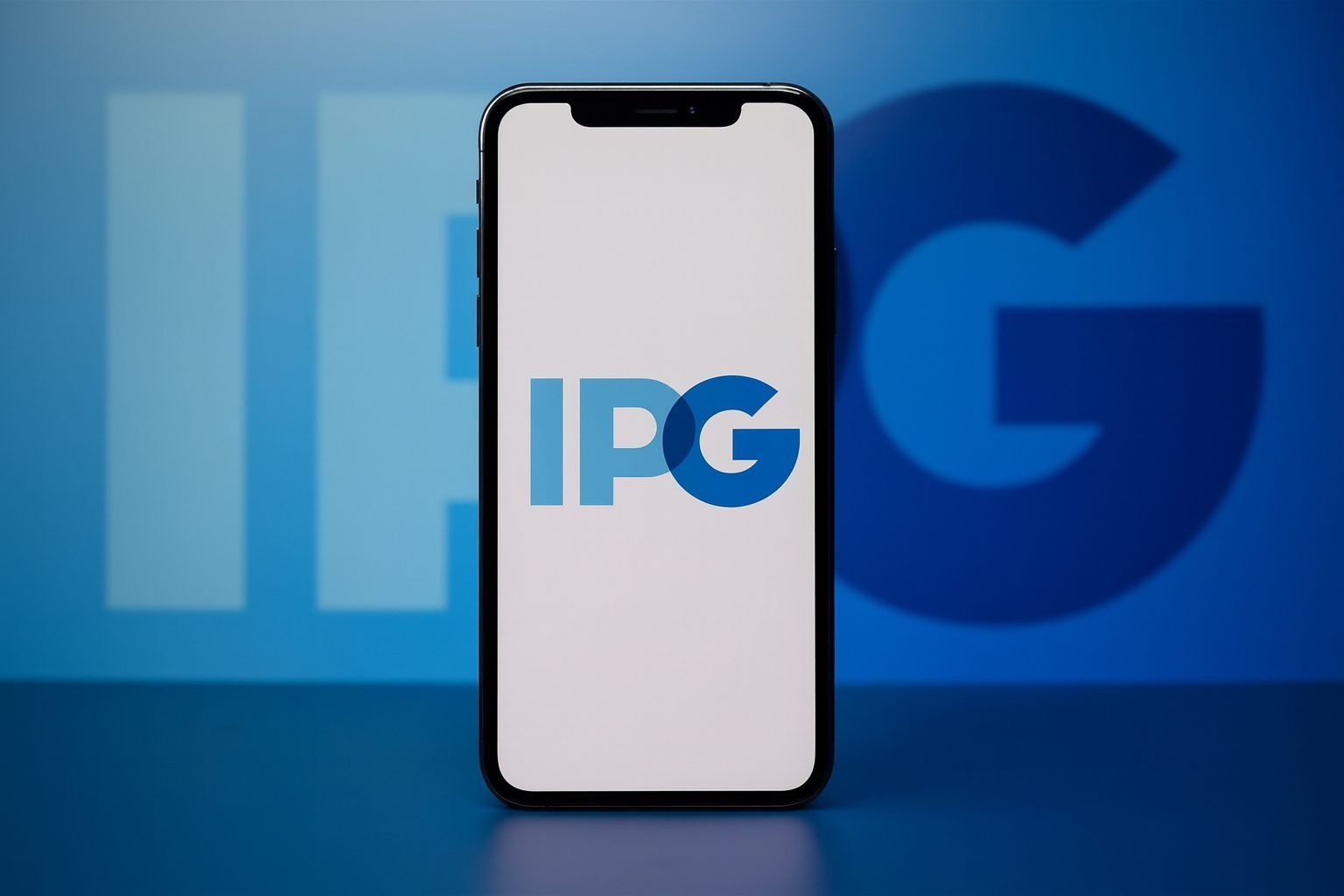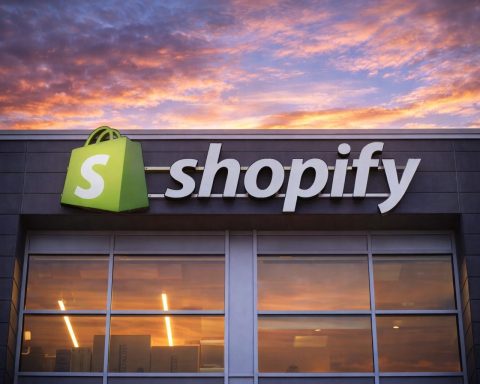Interpublic Group of Companies, Inc. (IPG) is about to disappear from U.S. stock screens. When Wall Street reopens after the Thanksgiving holiday on Friday, November 28, 2025, the IPG ticker will no longer trade on the New York Stock Exchange (NYSE) following the completion of its all‑stock merger with Omnicom Group Inc. (OMC). [1]
If you hold IPG shares, or follow advertising and media stocks, here’s exactly what you need to know before the opening bell on November 28.
1. Status check: IPG has already had its last NYSE trading session
The merger between Interpublic and Omnicom closed on November 26, 2025, creating what is now the world’s largest advertising and marketing holding company, with more than $25 billion in pro forma annual revenue. [2]
Following that closing:
- IPG requested that its common stock stop trading on the NYSE as of the open of trading on November 28, 2025, according to the company’s Form 8‑K filing. [3]
- The NYSE is expected to file a Form 25 to formally delist and deregister IPG shares, after which IPG will no longer be a publicly traded company. [4]
Because U.S. equity markets are closed on Thursday, November 27 for the Thanksgiving holiday, the final regular NYSE session for IPG was Wednesday, November 26, 2025. On that day:
- IPG closed at $24.57, down 1.96%. [5]
- Volume spiked to about 82.1 million shares, versus a 50‑day average near 7 million, a classic sign of merger‑related arbitrage and index rebalancing flow into the close. [6]
- The stock finished roughly 25–26% below its 52‑week high of $33.05 set in December last year. [7]
For investors waking up on Friday: you should not expect to see live quotes or pre‑market trades in IPG at all. The symbol is scheduled to be inactive from the open.
2. Deal terms in one glance: 0.344 Omnicom shares per IPG share
At the effective time of the merger, each outstanding share of IPG common stock was automatically converted into Omnicom equity: [8]
- Exchange ratio:
- Every 1 IPG share → 0.344 OMC shares
- Fractional shares:
- Any fractional Omnicom shares are paid out in cash, rather than issuing partial shares.
- Ownership split of the combined company:
- Legacy Omnicom shareholders: about 60.6%
- Legacy Interpublic shareholders: about 39.4% [9]
Legal filings and multiple Form 4 insider reports all confirm the 0.344 exchange ratio plus cash in lieu of fractional shares, and that IPG now exists as a wholly owned subsidiary of Omnicom. [10]
What that means in practice
If you owned IPG at the close of trading on November 26:
- 100 IPG shares become
- 100 × 0.344 = 34.4 OMC shares
- You’ll see 34 OMC shares in your account plus cash for the remaining 0.4 share (at your broker’s calculated rate).
- 1,000 IPG shares become
- 1,000 × 0.344 = 344 OMC shares exactly (no fractional share).
The precise timing of when those Omnicom shares appear in your brokerage account can vary by firm, but the conversion is mechanical and already defined by the merger agreement, not by what happens to the share price on November 28. [11]
3. What to expect at the open on November 28, 2025
No more IPG ticker – watch OMC instead
At Friday’s open:
- IPG will not trade on the NYSE. The company requested that its shares cease trading as of the open, not intraday. [12]
- The combined advertising giant will continue under the Omnicom name and ticker OMC on the NYSE. [13]
Omnicom closed Wednesday at $71.50, after a third straight day of losses and now sits more than 30% below its 52‑week high of $105.99. [14]
Expect OMC, not IPG, to absorb most of the price discovery linked to:
- Final merger‑arbitrage unwinds
- Index changes and passive fund rebalancing
- New fundamental positioning as investors recalibrate around a much larger, more leveraged, but potentially more efficient advertising group
Given the Thanksgiving‑shortened Friday session and the symbolic nature of IPG’s delisting, early trading in OMC could be volatile but liquidity‑rich, especially in the first hour.
4. How Interpublic was performing heading into the merger
To understand how the market might treat the new Omnicom‑IPG combination, it helps to look at IPG’s stand‑alone fundamentals in 2025.
Q3 2025: earnings beat, but revenue under pressure
For Q3 2025, Interpublic:
- Reported revenue of about $2.49 billion, beating Street estimates near $2.20 billion, according to Reuters. [15]
- delivered GAAP EPS of $0.34 per share, up sharply from $0.05 a year ago. [16]
- On an adjusted basis, earnings were roughly $0.73 per share, slightly ahead of consensus around $0.71–0.72. [17]
- Still saw organic revenue decline of about 2.9%, with total revenue down just over 5% year‑on‑year as the group cycled prior account losses and softer spending in some categories. [18]
Management has been explicit that account losses in 2024 and cautious client budgets continue to weigh on growth, particularly in media, retail and auto & transportation, while healthcare and food & beverage remained pockets of strength. [19]
Restructuring and job cuts
IPG has been aggressively cutting costs and reshaping its footprint ahead of the Omnicom deal:
- Around 800 jobs were eliminated in Q3 alone, part of a restructuring program expected to generate $450–$475 million in total charges by end‑2025. [20]
- Across 2025, Interpublic has cut about 3,200 roles globally (a bit over 5% of staff), vacated office space and consolidated operations, aiming to protect margins while organic revenue dips. [21]
Despite revenue headwinds, the cost actions and restructuring helped IPG deliver record margins in Q2 2025 and guide for full‑year 2025 organic net revenue down 1–2%, with adjusted EBITA margin “significantly ahead” of the 16.6% level shared previously. [22]
Dividend and income profile
IPG entered the merger with an attractive income profile:
- Dividend yield around 5.3–5.4%, according to recent income‑stock screens. [23]
- YTD total return near 8.9% through November 26, 2025, trailing the S&P 500 but still positive in a choppy advertising cycle. [24]
After conversion, former IPG investors will own Omnicom shares, which currently pay a $2.80 annual dividend—equivalent to a yield of roughly 3.9% at $71.50. [25]
That means income‑oriented investors are effectively trading a higher yield for exposure to a larger, more diversified platform that management argues should deliver more resilient cash flows over the cycle.
5. What the new Omnicom–Interpublic giant looks like
The Omnicom–Interpublic combination has been described as a “Madison Avenue makeover” and a defining moment for legacy agency holding companies. [26]
Scale and structure
Key strategic facts:
- Combined pro forma revenue exceeds $25 billion, surpassing WPP and Publicis and making the new Omnicom the largest advertising holding company globally. [27]
- Portfolio spans global creative and media brands such as BBDO, DDB, TBWA, McCann, FCB, OMD, PHD, and Initiative, plus data platforms like Omni and Acxiom, and IPG’s AI‑enabled “Interact” system. [28]
- Management expects annual cost synergies of roughly $750 million, primarily from overlapping back‑office functions, real estate, procurement, and some network consolidation. [29]
Strategic rationale
The deal was pitched as a way to:
- Gain scale in data and AI, as platforms like Google, Meta, Amazon and TikTok increasingly own both inventory and targeting. [30]
- Strengthen bargaining power in media buying and marketing technology. [31]
- Simplify client offerings by bringing creative, media, CRM and commerce capabilities under one umbrella, while still presenting “open architecture” teams to large global brands. [32]
Analysts have also warned that the merger is a “stress test for pure‑play advertising stocks in an AI‑first world”, as the combined group will need to prove it can integrate legacy structures while modernising faster than smaller, more nimble challengers and consulting‑led rivals. [33]
6. Key implications for IPG shareholders after delisting
1. Your economic exposure shifts to OMC
Once the conversion is processed:
- You no longer own IPG as a stand‑alone stock.
- Your risk and return profile are tied to Omnicom’s balance sheet, earnings, dividend policy and integration execution.
OMC’s own stock has had a tough year, with 12‑month total return around ‑28% and year‑to‑date returns down low‑double digits, despite solid profitability and a healthy dividend. [34]
2. Dividend profile changes
- IPG’s higher yield (~5.3%) is replaced with OMC’s ~3.9% forward yield, but on a business with larger absolute free cash flow and a long history of maintaining and growing its dividend. [35]
For income investors, the question becomes whether lower yield but potentially better long‑term cash‑flow stability is an acceptable trade‑off.
3. Analyst sentiment and valuation
Heading into the deal:
- IPG carried a majority “Hold” consensus with a handful of “Buy” ratings, and modest upside implied by target prices in the high‑$20s. [36]
- On 2025 earnings estimates, IPG traded at a reasonable mid‑teens P/E before the deal discount and arbitrage dynamics compressed the trading range. [37]
Omnicom today trades around 10–11x trailing earnings with a low‑teens forward multiple, a discount to some faster‑growing digital‑first peers but broadly in line with mature agency groups. [38]
Former IPG investors effectively become holders of a value‑tilted, income‑paying mega‑cap advertising stock with substantial integration risk but also significant cost‑saving potential.
4. Integration, execution and risk
Key things to watch over the next 12–24 months:
- Synergy delivery: Does Omnicom actually realise the $750 million in annual cost savings without damaging client relationships or creative quality? [39]
- Organic growth: Both IPG and Omnicom have faced sluggish or negative organic growth in 2025; the combined entity needs to show it can at least keep pace with GDP‑like growth while modernising. [40]
- Talent and culture: Large mergers can trigger departures of top creative and strategic talent; clients often follow senior teams out the door.
- Regulatory and client conflicts: While regulators cleared the deal without conditions in Europe and, earlier, in the U.S., client conflicts within categories (auto, CPG, tech, financial services) may still force account reshuffles. [41]
7. Checklist for investors before the November 28 open
If you’re holding—or used to hold—IPG shares, here’s a practical to‑do list before and just after the bell tomorrow:
- Confirm share conversion with your broker
- Check that your IPG position is correctly showing as OMC shares plus any cash in lieu for fractional entitlements. [42]
- Update your watchlists and alerts
- Remove IPG and add OMC so you continue to track the combined company’s performance, news, and dividend announcements.
- Reassess your thesis
- Ask whether your original reason for owning Interpublic—income, cyclicality, advertising exposure, or potential M&A—still holds now that your exposure is via Omnicom.
- Review tax considerations
- Stock‑for‑stock mergers can have nuanced tax treatment depending on your jurisdiction; some elements may be tax‑deferred while cash in lieu of fractional shares may be taxable. Consider speaking with a tax professional rather than relying solely on headlines or message boards.
- Listen for early integration commentary
- Watch upcoming Omnicom earnings calls, investor days, and regulatory filings for updated synergy timelines, restructuring charges, and any early client wins or losses linked to the merger. [43]
8. Bottom line
By the time the NYSE opens on Friday, November 28, 2025, Interpublic Group’s long run as a stand‑alone public company will effectively be over. There will be no pre‑market or regular‑session trading in IPG, and former shareholders will own a slice of a much larger Omnicom‑led marketing conglomerate instead. [44]
For investors, the story from here is less about IPG’s individual stock and more about:
- How convincingly Omnicom executes on integration and cost synergies
- Whether the combined group can reignite organic growth in a world dominated by big tech platforms and AI‑driven marketing tools
- And whether OMC’s valuation and dividend adequately compensate for the risks of knitting two global agency networks into one.
As always, this article is for informational purposes only and does not constitute financial or investment advice. Before making any decision to buy, sell or hold Omnicom—or any successor interests to Interpublic—consider your own objectives, risk tolerance and, if needed, consult a qualified advisor.
References
1. www.omnicomgroup.com, 2. www.omnicomgroup.com, 3. www.stocktitan.net, 4. www.stocktitan.net, 5. www.marketwatch.com, 6. www.marketwatch.com, 7. www.marketwatch.com, 8. www.sec.gov, 9. www.axios.com, 10. www.sec.gov, 11. www.sec.gov, 12. www.stocktitan.net, 13. www.axios.com, 14. www.marketwatch.com, 15. www.reuters.com, 16. www.reuters.com, 17. public.com, 18. www.mmm-online.com, 19. www.fool.com, 20. www.reuters.com, 21. www.campaignasia.com, 22. investors.interpublic.com, 23. finance.yahoo.com, 24. finance.yahoo.com, 25. stockanalysis.com, 26. www.businessinsider.com, 27. www.ft.com, 28. www.businessinsider.com, 29. www.ft.com, 30. www.reuters.com, 31. www.ft.com, 32. www.omnicomgroup.com, 33. bestmediainfo.com, 34. www.financecharts.com, 35. finance.yahoo.com, 36. www.marketbeat.com, 37. www.marketbeat.com, 38. stockanalysis.com, 39. www.ft.com, 40. www.emarketer.com, 41. www.reuters.com, 42. www.sec.gov, 43. www.omnicomgroup.com, 44. www.stocktitan.net







